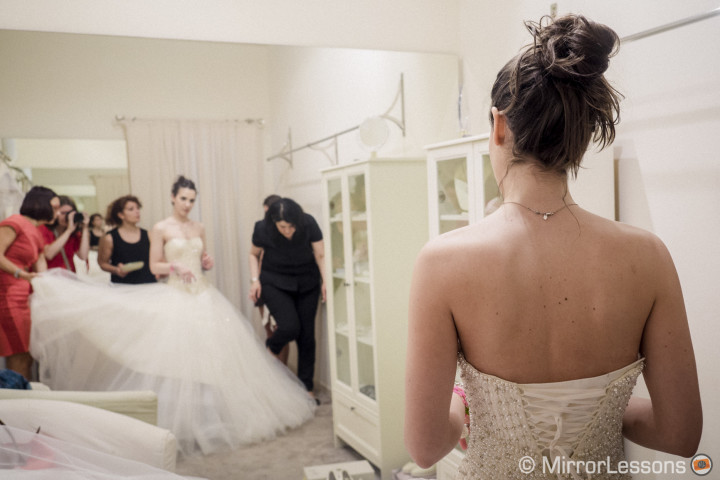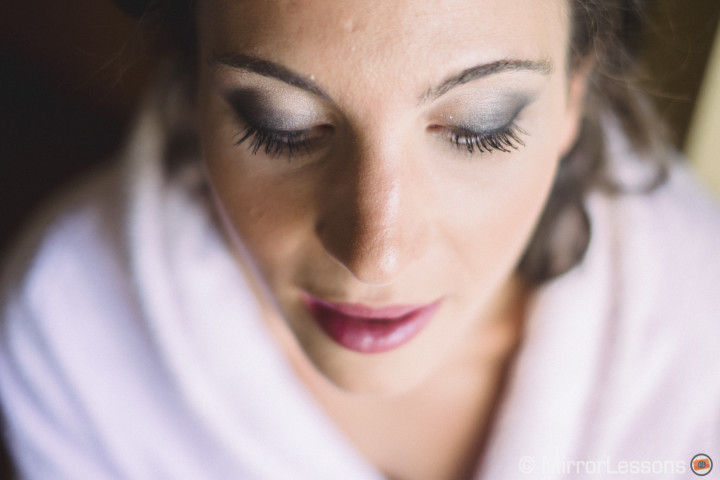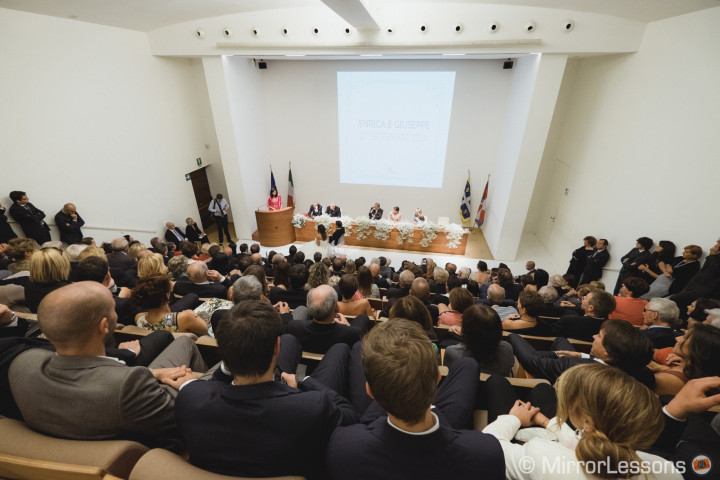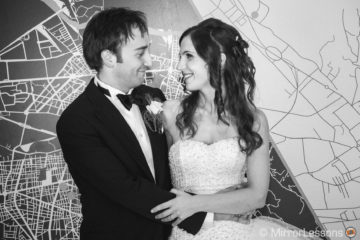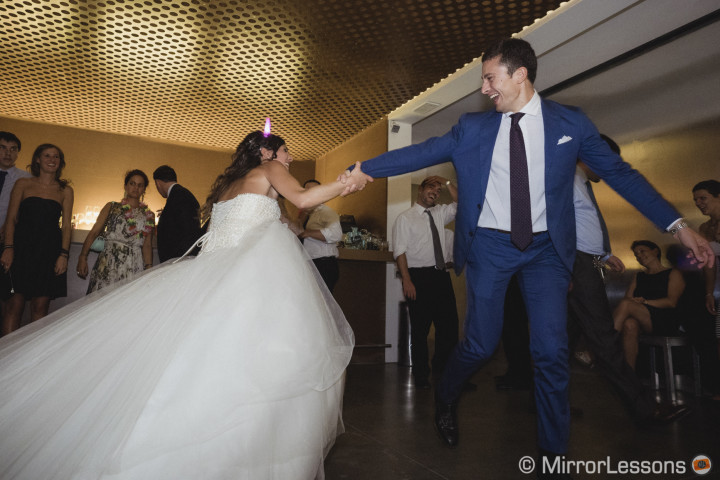We hear, read and talk about camera equipment all the time, but doing so inevitably leads us into the perilous trap of arguing too much about which brand/camera/lens is better than the other. The rise of mirrorless cameras over the past two years has probably expanded this war of words even further. “Can a mirrorless camera rival other systems in terms of image quality, speed and performance?” “Can it find a professional application?” “Can a small sensor compete with a larger one?” The question that however is raised less but in my opinion is actually more important is the following:
Up to what point does all this tech talk really matter?
Allow me then to share a story. It’s about a “mirrorless wedding” that Heather and I covered as paid photographers a couple of months ago. It was the first time we officially worked together on assignment and it was also the first time I used mirrorless cameras exclusively with another photographer.

Weddings aren’t my main business as a professional photographer but of course like most of my colleagues, I’ve photographed some. One of the last I covered was with my colleague Sabrina with whom I worked for the last four years at the Cinema Museum of Turin. It was one of my first assignments after switching from my DSLR to the OM-D E-M5, while she had a Canon 7D. We mixed our files together and compiled an album without a single problem.
Weddings aren’t my favourite genre but I do find them quite interesting. In fact I can highly recommend that a young photographer start his or her career by working at a handful of weddings. What I like about them is that you can learn many skills and techniques that will be important to developing your professional career later on.
You learn to work with a client. You share your ideas, you listen to theirs and you come to understand what they are expecting from you, which unsurprisingly isn’t delivering sharp and well-exposed images but capturing what makes them unique as a couple on the happiest day of their lives.
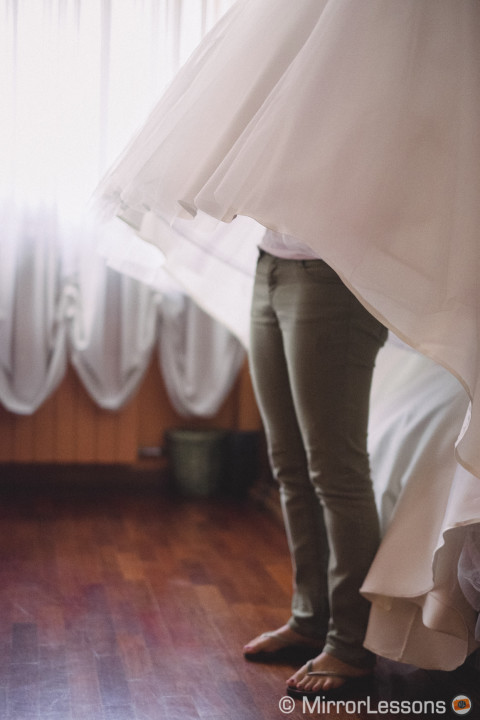
They also expect counselling accompanied by original ideas and solutions. It is about delivering a story that both the bride and groom can instantly recognise as their own. This might sound banal but it is true, and only experience will help you to understand exactly what goes into telling this kind of story through photography. It doesn’t apply just to weddings but to any kind of assignment.
The other aspects I like about weddings are the time schedule and the pressure. Because you know that certain instants are fleeting, and will disappear if you aren’t quick enough. Because no matter how well a wedding is planned, there is always something that can go wrong. That’s where your ability to react quickly can make a difference. It’s something that you learn with time and will become very precious knowledge in the future.
With this particular wedding I have to say that I had a privileged position: Enrica, the bride, is my best friend. I’ve known her since I was 8 years old. This is also the reason she wanted me to cover her wedding day, but I really appreciated that she gave me the choice to be either one of the guest or the official photographer. When you do this for a living it isn’t uncommon to have friends or relatives invite you to a wedding and ask you at the same time to take some photos, hoping that you will be cheaper or that you’ll do it as wedding present. Enrica and her husband-to-be Giuseppe gave me the choice and also respected my professional integrity, and that is a sign of a good friendship. At the same time, I was even more careful about not messing up even the smallest detail.
Knowing both the bride and the groom well, I proposed a little experiment that they accepted with enthusiasm: to take photos of them before the wedding, not as traditional engagement shots but by following them during their daily routine as they prepared for the big day. I followed Giuseppe when he went from one shop to another to choose his suit, and Heather followed Enrica when she tried her dress on for the first time. We followed them during the first rehearsal and location scouting. We even met up in party favour shops.
Our goal was to give them something above and beyond the many memories they would collect on their wedding day.
This side project wasn’t easy to accomplish mainly because our schedules often didn’t coincide. We were both very busy. Some of these moments were captured during our lunch break or in the middle of a very stressful week. As photographers we had to remain very discreet in situations where usually there isn’t a photographer at all, yet still try to capture interesting moments and expressions even if it wasn’t the best time to do so. That was the first challenge. Working with small and silent cameras was certainly an advantage.
In the end, Enrica and Giuseppe have printed memories of themselves moving into their new apartment, preparing for the wedding, spending time with their respective families, as well as other tender moments that will produce even more smiles when they review the album in a few years, perhaps with their kids.
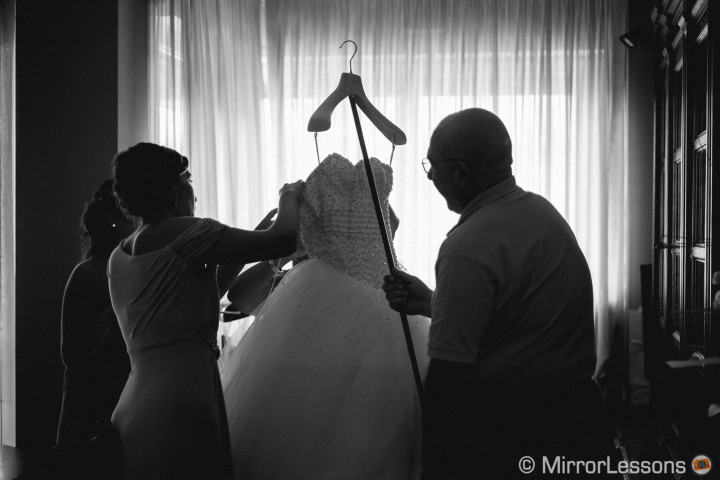
The wedding day was organised by one of their family friends. Giuseppe prepared himself at his parents’ house outside of Turin while Enrica got dressed downtown. This is one of the reasons Heather and I decided to work together. She covered the bride’s preparation while I drove to Giuseppe’s to cover his. It was the first wedding Heather had ever shot. I covered the ceremony and all the official parts while she took shots from different angles and perspectives and thus completed my work. I have covered weddings alone but I must say that having a second person with you is reassuring. The second photographer can take some large shots from different positions. It also means that you can be in two places at one time and work with less haste.
Heather and I were very careful to choose which cameras and lenses to use for the wedding day. Normally I would only have one system with perhaps a second or third body but thanks to MirrorLessons, we had different cameras at our disposal.
We chose Olympus as the main system because I use the OM-D E-M1 for work, meaning that I also had different accessories and lenses that we could share. Heather had the OM-D E-M10. We then settled on a second body each to cover the bride and groom’s preparation and other moments. I had the Sony A7s which was perfect to capture some portraits in tight spaces and work in critical light in the late evening. The Fuji X-T1 allowed Heather to take beautiful wide shots with the 10-24mm since I don’t own an extreme wide angle lens for the MFT system yet. She also took portraits of Enrica during her preparation with the 35mm 1.4.
Four cameras and three different sensor sizes allowed us to cover everything.
The nice thing is that despite having so much gear each, we didn’t need to have big bags with us.
The gear I used:
- Olympus OM-D E-M1
- M.Zuiko 12-40mm f/2.8
- M.Zuiko 75mm f/1.8
- Nissin i40 MFT Flash
- Sony A7s
- Sony FE 55mm f/1.8 ZA
The gear Heather used:
- Olympus OM-D E-M10
- M.Zuiko 45mm f/1.8
- Lumix 35-100mm f/2.8
- Olympus Fl-600r Flash
- Fujifilm X-T1
- Fujinon XF 10-24mm f/4
- Fujinon XF 35mm f/1.4

The entire event took place in one location (the Fondazione Sandretto Rerebaudengo which is an art exhibition facility) and that was a relief since we didn’t have to drive from one location to another as is the case with many weddings. The ceremony was held in what is usually a conference room but on this special occasion it was decorated for the wedding. Having lots of experience with events and conferences I was actually a little worried since the room was much less attractive than a proper church, but in the end it worked out well.
With Enrica and Giuseppe we opted for a reportage style coverage. They weren’t inclined to take time away from their friends and family to pose and there weren’t any nice areas around the facility we could quickly visit. As such both Heather and I tried to capture candid and true moments with the goal of doing something extra at the end of the wedding in downtown Turin.
Another nice addition was the preparation of a photo corner, an idea that is not unpopular at weddings. There was a very nice background that represented the cities where Enrica and Giuseppe were born and the most important streets in their lives with an elegant graphic design. This is where we took the traditional group shots.
Originally they’d also had the idea to put disposable cameras on each table so that people could take photos and later send them to them. Then we thought of the possibility of creating an Instagram account where people could post photos taken with their smartphones. We also discussed the possibility of using Fuji Instax cameras so people could take pictures and attach them to a dedicated wall. But getting enough cameras and film would have raised the expenses that like any wedding were already high. So I proposed that they use the photo corner and make it a set to takes selfies with the simple use of a remote. That way it would become a very easy and entertaining thing that the guests could do to leave an additional memory to the bride and groom.
To say that this feature quickly became the hit of the evening would be an understatement. Every 20 minutes I would swap the memory card on the GH3 we’d set up on a tripod, and upload the OOC JPGs on a Macbook Pro computer to project them during the dances so that people could quickly see themselves on the wall.
The set up was the following: a Panasonic Lumix GH3 on a tripod with a 14-42mm mounted. I connected a PC monitor to the HDMI port of the camera and bought a cheap remote controller (the Pixel RW-221/L1). I activated face detection so that the GH3 could easily adjust the autofocus (and it did even when people posed very close to the lens).
All the guests had to do was enter the photo corner, take the remote, look at the monitor to check the composition and take the shot. We ended up with almost 1000 selfies alone. Since the camera position didn’t change, I also created a time-lapse video with a compilation of all the images and sent it to them the night before their honeymoon vacation. It was a nice and original preview of the wedding.
At 2am, despite being very tired, we decided to go to the centre of Turin to take some quick photos in Piazza San Carlo which is one of the most beautiful squares in the city. Some of their friends came along and we took some group shots as well as some classic shots of Enrica and Giuseppe on their own. Here I used the A7s, relying on its great ISO sensitivity and positioning the couple to get the best out of the natural light in the piazza.
Once all the photos were sorted and we made the final selection, we wanted to post-process them to give a similar look to all the pictures. Working with the RAW files in Lightroom was already a good start but we also wanted to add a little bit of style without exaggerating. This is where the Rebecca Lily presets came in handy because of the delicate colour palette they apply to the images. They also really take advantage of all the dynamic range available. In this way, all the images taken with different cameras and sensor sizes merged really well together. We just ordered a very nice album through the excellent GraphiStudio service (a company specialised in album and photo books in Italy) and it is now on its way.
This was the final chapter of a small yet very pleasant photographic journey that started out in a pizzeria in March 2014.
Additional notes
Focusing
One of the main concerns people have about mirrorless cameras is related to the autofocus especially when there is critical light involved. Weddings are known to be challenging for this. I usually work in AF-S with one single AF point. I don’t trust Multi AF too much because it can often focus on the wrong subject. Face detection can be inaccurate especially with fast apertures. This is feedback I can apply to the four different cameras we used. I also often work with the pre-focussing technique, meaning that I focus on an area where my subject is or will pass through. To predict helps to prepare the AF to focus on the subject and fire the shot, as there is less movement of the elements inside the lens. Of course there is also the possibility to use AF-C for moments like the bride entering the room, but since she’s moving slowly I find AF-S enough for most situations. Mirrorless cameras aren’t as reactive as DSLRs but the difference is less pronounced than you might think. It is just a question of understanding the ideal AF settings (smaller or wider AF point depending on the camera, focus priority over speed priority, AF illuminator lamp, etc) and knowing how to make the best of it.
ISO sensitivity
Having the A7s was a great advantage. Without it I could have worked with either the Fuji X-T1, whose high ISO sensitivity I find usable up to 6400 ISO, or the MFT cameras, trying not to go past 3200 ISO (but 6400 ISO is still decent). For the last posed shots in Turin at night I could have used slower shutter speeds with the E-M1 thanks to its 5 axis stabilisation (1/25s or even 1/13s), allowing me keep my ISO speed lower.
Flash units
The Fl-600r from Olympus and the Nissin i40 are powerful little flashes. They won’t give the same performance as the best Nikon or Canon flash units but they do the job quite well. If you don’t shoot often at a high frame rate the lamp recharge time is good. The important thing is to have enough spare batteries. When the recharging cycle gets slower, it means that the battery power is decreasing and it’s better to change it sooner than wait for it to be almost depleted. The i40 despite its “plasticky” build is strong and endured several bumps during the day.
Battery power
Mirrorless cameras in general have a shorter battery life in comparison to DSLRs. For a wedding I recommend at least three or four batteries. The Sony A7s is the worst performer while with the E-M1 I can manage with three batteries. The E-M10 surprisingly lasted longer. As for the X-T1, we used it less than the other three cameras but I would say three batteries minimum. You can also keep a charger with you and plug it in during dinner time.
If you are interested in wedding photographers who use mirrorless cameras, make sure to check out our list of 22 photographers who have gone completely mirrorless for wedding photography. Some of them are a great source of inspiration for us as well.

